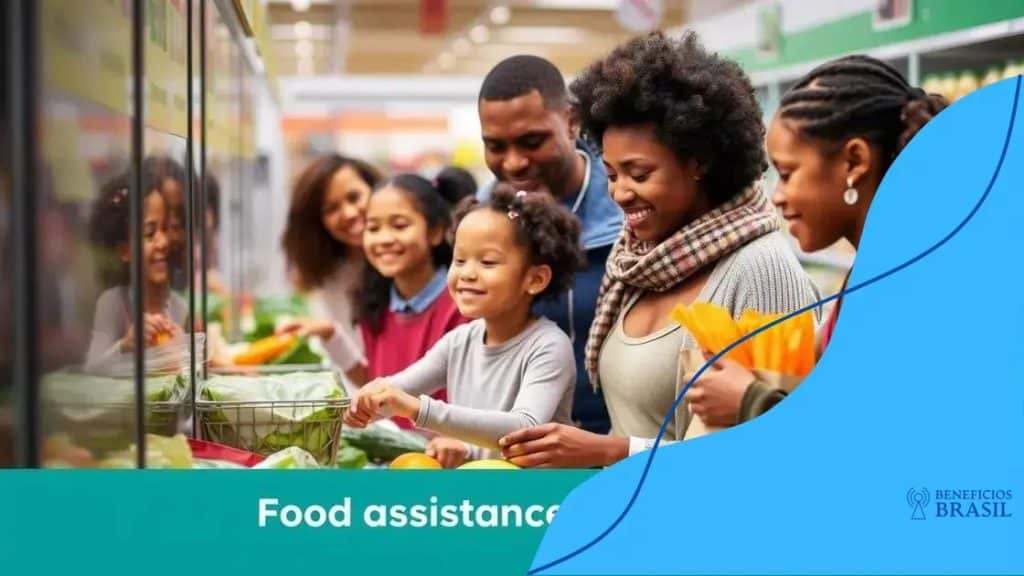WIC vs SNAP: Which food assistance program fits your needs?

WIC provides nutritional assistance specifically for women, infants, and children, while SNAP offers broader food support to low-income individuals and families, making both essential for improving food security.
WIC vs SNAP is a topic that many families grapple with when seeking food assistance. Choosing the right program can feel overwhelming, but understanding the differences is essential.
Understanding WIC: Key features and eligibility
When looking at WIC, or the Special Supplemental Nutrition Program for Women, Infants, and Children, it’s important to understand its key features and who is eligible to participate. WIC provides nutrition assistance and education to women who are pregnant, breastfeeding, or caring for young children.
Eligibility for WIC is based on several factors, including income level, residential status, and nutritional needs. Individuals who participate in WIC must meet the following criteria:
Key Features of WIC
WIC offers a variety of services to its participants. These features are designed to support nutritional health and well-being. Here’s what you can expect:
- Nutrition education tailored for families.
- Access to healthy foods such as fruits, vegetables, whole grains, and dairy products.
- Breastfeeding support and resources.
- Referrals to health care and social services.
This program not only helps in providing nutritious foods but also plays a significant role in improving health outcomes for mothers and their young children.
To apply for WIC, potential participants can visit their local health department or community organization. The application process typically requires proof of income, residency, and nutritional assessment. Understanding the WIC program’s eligibility requirements is essential for accessing the benefits it offers.
The support WIC provides is invaluable. It empowers families to make healthier choices while ensuring children receive the essential nutrients they need for proper growth and development. By participating in WIC, families can improve their overall health and well-being, making it a crucial resource for those who qualify.
Exploring SNAP: Benefits and requirements

Understanding SNAP, or the Supplemental Nutrition Assistance Program, is key for those seeking food assistance. This program helps low-income individuals and families afford healthy food, providing essential support during tough times.
One of the main benefits of SNAP is that it helps alleviate food insecurity. Eligible participants receive an EBT card, which can be used to purchase food at various stores. The program also fosters independence by allowing recipients to choose their groceries.
Key Benefits of SNAP
SNAP offers several important benefits, including:
- Access to a wider variety of nutritious foods.
- Participation in nutrition education programs.
- Support for local farmers and grocery stores.
- Improved overall health for families.
By assisting families with their food budget, SNAP helps to improve their nutritional status. This is essential for fostering healthy development in children, as proper nutrition plays a significant role in their growth.
The eligibility requirements for SNAP are designed to ensure that those who need help can access it. To qualify, individuals typically must meet certain income limits, which vary by household size. Other factors may include citizenship status, work requirements, and whether the applicant already receives temporary assistance or benefits from other programs.
Applying for SNAP is a straightforward process. Interested individuals should contact their local SNAP office or visit their website to find application forms and instructions. Additionally, they may need to provide proof of income, residency, and household size for a comprehensive assessment.
Comparing WIC and SNAP: What sets them apart?
When discussing WIC and SNAP, it’s vital to recognize their unique characteristics and purposes. Both programs aim to improve nutrition and food access for those in need, but they cater to different populations and have distinct eligibility requirements.
WIC is primarily focused on women, infants, and children, providing nutrition education and supplemental foods. This program targets those who are pregnant, breastfeeding, or caring for young children up to age five. In contrast, SNAP serves a broader audience, including low-income individuals and families, allowing them to purchase a variety of foods.
Key Differences Between WIC and SNAP
Here are some significant differences:
- Target Population: WIC focuses on specific groups like pregnant women and young children, while SNAP is available to a wider range of low-income individuals.
- Categorized Benefits: WIC provides specific food items and nutrition counseling, whereas SNAP allows recipients to choose their groceries.
- Funding and Administration: WIC is federally funded but administrated by states, while SNAP is jointly managed by both federal and state governments.
- Eligibility Criteria: WIC eligibility usually requires not only income limits but also nutritional risk assessment, while SNAP focuses mainly on income.
Another key aspect is the type of food assistance provided. WIC offers specific nutritional foods, such as milk, eggs, and whole grains, often accompanied by educational resources. On the other hand, SNAP allows participants to purchase a wider range of food products, including fruits, vegetables, grains, dairy, and meat, giving families more flexibility in their meals.
Understanding these differences can help individuals and families choose the best program for their needs. Each program has its own strengths and focuses on ensuring that those eligible can access nutritious food and vital support.
How to apply for WIC and SNAP programs

Applying for both WIC and SNAP programs is a crucial step for those in need of food assistance. The application processes for these two programs differ slightly, but both are designed to be accessible to eligible participants.
To start the application for WIC, individuals can visit their local WIC clinic or health department. It is important to bring specific documents to verify eligibility. These typically include proof of income, identification, and residency. WIC staff will conduct a short assessment to determine nutritional needs and offer program benefits.
Steps to Apply for WIC
- Find your local WIC clinic or health department.
- Gather necessary documents such as ID, proof of income, and residency.
- Schedule an appointment for an eligibility assessment.
- Attend the appointment and discuss your nutritional needs.
On the other hand, the SNAP application process usually can be completed online through the state’s SNAP website or in person at local offices. Similar to WIC, applicants need to provide income information and proof of any other benefits they currently receive.
Steps to Apply for SNAP
Here’s how to apply for SNAP:
- Visit the state’s SNAP website or local office.
- Complete the application form with personal and financial information.
- Provide requested documentation, such as income and residency proof.
- Attend an interview if required by the local office.
Both programs encourage individuals and families to apply. Many resources are available online to help guide applicants through the process. If you encounter any difficulties, local community organizations can also offer assistance. Understanding how to navigate the application process can lead to valuable support for those in need.
Real-life stories: Success with WIC and SNAP
Real-life stories about individuals and families who have benefited from WIC and SNAP provide powerful insights into how these programs can improve lives. Many participants have shared their experiences, highlighting how access to food assistance has changed their circumstances for the better.
For example, one mother named Sarah found herself struggling after losing her job. With two young children at home, she worried about how to provide nutritious meals. After applying for WIC, she received vouchers for fruits, vegetables, and whole grains, along with educational resources on healthy eating. This support not only eased her financial burden but also helped her make better dietary choices for her family.
Success Stories from SNAP Participants
Similarly, John and his family turned to SNAP when faced with unexpected medical expenses that strained their budget. By receiving SNAP benefits, they were able to purchase nutritious foods rather than cheap, unhealthy options. This assistance allowed them to maintain a balanced diet during a challenging time, which significantly improved their overall health.
- Many families report increased food security and reduced stress levels while participating in WIC and SNAP.
- Participants often gain access to cooking classes and nutrition workshops that foster long-term healthy habits.
- Success stories often include finding stability in financial situations, leading to better job performance and opportunities.
These personal accounts illustrate the tangible benefits that WIC and SNAP programs provide. They help families not just survive but thrive, encouraging healthier lifestyles and fostering resilience. Many recipients, inspired by their progress, have also become advocates for these programs, sharing their successes with others in their communities, highlighting the positive impact of food assistance.
FAQ – Frequently Asked Questions about WIC and SNAP Programs
What is the purpose of the WIC program?
The WIC program provides nutrition assistance and education to low-income pregnant women, breastfeeding mothers, and children under five, promoting healthy eating habits.
How does SNAP help families in need?
SNAP offers financial assistance to low-income individuals and families so they can purchase nutritious food and relieve food insecurity.
What are the eligibility requirements for WIC and SNAP?
Eligibility for WIC is based on income, residency, and nutritional needs; SNAP eligibility primarily considers income and household size.
How can I apply for WIC and SNAP programs?
You can apply for WIC at local clinics and health departments, while SNAP applications can often be completed online through your state’s SNAP website.
